Emotional Responses to Bed Bug Encounters: Effects of Sex, Proximity, and Educational Intervention on Fear and Disgust Perceptions
Simple Summary
Abstract
1. Introduction
- (1)
- Examine the emotional responses to bed bugs by:
- (a)
- establishing baseline emotional perceptions.
- (b)
- tracking changes in emotional intensity following the viewing of educational video content.
- (2)
- Analyze variations in emotional responses (particularly fear and disgust) based on:
- (a)
- Sex differences.
- (b)
- Proximity by environmental contexts (e.g., inside versus outside and home versus public settings).
- (c)
- Knowledge of bed bugs.
- (3)
- Evaluate the effectiveness of a brief, self-guided educational video in improving public knowledge about bed bug management and control strategies.
2. Materials and Methods
2.1. Participants
2.2. Experimental Procedure
3. Results
3.1. Emotional Perceptions of Bed Bugs: Changes in Fear and Disgust Following Educational Intervention
3.2. Sex, Proximity, and Prior Knowledge: Influences on Emotional Responses to Bed Bug Encounters
3.3. Educational Video Intervention Enhances Public Knowledge of Bed Bug Management
4. Discussion
5. Conclusions
Author Contributions
Funding
Data Availability Statement
Acknowledgments
Conflicts of Interest
Abbreviations
| DEQ | Discrete Emotions Questionnaire |
| ID | Identification Number |
| QR | Quick Response Code |
| LSD | Least Significant Difference |
| BA | Behavioral Activation |
| OCD | Obsessive–Compulsive Disorder |
Appendix A

Appendix B
- 1.
- Bed bugs have:
- 2.
- Bed bugs find a host through which cues?
- 3.
- Bed bugs feed by:
- 4.
- Are bed bugs known to spread disease?
- 5.
- How do bed bugs search for their host?
- 6.
- Bed bugs are confined to the bedroom.
- 7.
- When inspecting for bed bugs, you should look for:
- 8.
- People who think they have been bitten, although they have had no real encounter with a hematophagous (blood sucking) insect may have:
- 9.
- Immature bed bugs look like
- 10.
- Bed bug infestations are noted by:
- 11.
- Transporting bed bugs into an area is known as a bed bug?
- 12.
- Which tools would be useful for bed bug inspection and monitoring?
- 13.
- Bed bug infestations are a more common occurrence in the US today for all of the following reasons except:
- 14.
- Bed bug bites:
- 15.
- Important bed bug prevention techniques include all of these except:
- 16.
- The most likely way bed bugs will be transferred from one location to another is:
- 17.
- At what temperature should bed bugs be exposed to for at least 1 min before they will die?
References
- Alalawi, A.H. Bed bugs epidemic in the United States. Entomol. Ornithol. Herpetol. 2014, 4, 100143. [Google Scholar]
- Saenz, V.L.; Booth, W.; Schal, C.; Vargo, E.L. Genetic analysis of bed bug populations reveals small propagule size within individual infestations but high genetic diversity across infestations from the eastern United States. J. Med. Entomol. 2012, 49, 865–875. [Google Scholar] [CrossRef] [PubMed]
- Cousins, B. Bed bug sightings plummet as COVID-19 makes it harder for them to spread. CTV National News, 27 January 2021. Available online: https://www.ctvnews.ca/canada/bed-bug-sightings-plummet-as-covid-19-makes-it-harder-for-them-to-spread-1.5285091 (accessed on 8 May 2025).
- BBC. Stories of Our Times: The Great Big Bedbug Outbreak: Real or Hype? BBC, 19 October 2023. Available online: https://www.bbc.co.uk/programmes/p0gm6vvy (accessed on 8 May 2025).
- Brimblecombe, P.; Mueller, G.; Querner, P. Public and media interest in bed bugs-Europe 2023. Curr. Res. Insect Sci. 2024, 5, 100079. [Google Scholar] [CrossRef] [PubMed]
- Asshoff, R.; Heuckmann, B.; Ryl, M.; Reinhardt, K. “Bed bugs live in dirty places”—How using live animals in teaching contributes to reducing stigma, disgust, psychological stigma, and misinformation in students. CBE—Life Sci. Educ. 2022, 21, ar73. [Google Scholar] [CrossRef] [PubMed]
- Sheele, J.M. Respiratory diseases in patients with bed bugs. Clin. Respir. J. 2021, 16, 27–34. [Google Scholar] [CrossRef] [PubMed]
- Cooper, R.A.; Wang, C.; Singh, N.P. Evaluation of a model community-wide bed bug management program in affordable housing. Pest Manage. Sci. 2015, 72, 45–56. [Google Scholar] [CrossRef] [PubMed]
- Hwang, S.; Svoboda, T.; Jong, I.J.D.; Kabasele, K.; Gogosis, E. Bed bug infestations in an urban environment. Emerg. Infect. Dis. 2005, 11, 533–538. [Google Scholar] [CrossRef] [PubMed]
- Singh, N.; Wang, C.; Cooper, R. Effectiveness of a reduced-risk insecticide-based bed bug management program in low-income housing. Insects 2013, 4, 731–742. [Google Scholar] [CrossRef] [PubMed]
- Akhoundi, M.; Zumelzu, C.; Sereno, D.; Marteau, A.; Brun, S.; Jan, J.; Izri, A. Bed bugs (Hemiptera, Cimicidae): A global challenge for public health and control management. Diagnostics 2023, 13, 2281. [Google Scholar] [CrossRef] [PubMed]
- Susser, S.R. Suicide following an infestation of bed bugs. Am. J. Case Rep. 2013, 14, 176–178. [Google Scholar] [CrossRef] [PubMed]
- Susser, S.R.; Perron, S.; Fournier, M.; Jacques, L.; Denis, G.; Tessier, F.; Roberge, P. Mental health effects from urban bed bug infestation (Cimex lectularius L.): A cross-sectional study. BMJ Open 2012, 2, e000838. [Google Scholar] [CrossRef] [PubMed]
- Senabulya, G.W.; Alege, J.B.; Atuhairwe, C.; Taremwa, I.M. Prevalence and associated factors of bed bug infestations (Cimex lectularius) in Lubaga division, Kampala capital city, Uganda. Prev. Med. Community Health 2019, 2, 1000123. [Google Scholar] [CrossRef]
- Burns, G. Detroit Woman Starts Apartment Fire Trying to Exterminate Bed Bugs. MLive, 6 November 2015. Available online: https://www.mlive.com/news/detroit/2015/11/detroit_woman_starts_apartment.html (accessed on 8 May 2025).
- Schoelitsz, B.; Poortvliet, P.M.; Takken, W. Factors driving public tolerance levels and information-seeking behaviour concerning insects in the household environment. Pest Manage. Sci. 2018, 74, 1478–1493. [Google Scholar] [CrossRef] [PubMed]
- CBS News. Man Sets Himself, Apartment Ablaze Trying to Kill Bedbugs. CBS News, 10 January 2016. Available online: https://www.cbsnews.com/news/man-sets-himself-apartment-on-fire-while-trying-to-kill-bedbugs-detroit/ (accessed on 8 May 2025).
- Sofranec, D. There’s a Better Way to Rid a Rental Car of Bed Bugs. Pest Management Professional, 16 April 2015. Available online: https://www.mypmp.net/2015/04/16/theres-a-better-way-to-rid-a-rental-car-of-bed-bugs/ (accessed on 14 August 2024).
- Kellert, S.R. Values and perceptions of invertebrates. Conserv. Biol. 1993, 7, 845–855. [Google Scholar] [CrossRef]
- Lemelin, R.H.; Harper, R.W.; Dampier, J.B.; Bowls, R.; Balika, D. Humans, insects and their interaction: A multi-faceted analysis. Anim. Stud. J. 2016, 5, 65–79. [Google Scholar]
- Lemelin, R.; Dampier, J.; Harper, R.; Bowles, R.; Balika, D. Perceptions of insects: A visual analysis. Soc. Anim. 2017, 25, 553–572. [Google Scholar] [CrossRef]
- Shipley, N.J.; Bixler, R.D. Beautiful bugs, bothersome bugs, and FUN bugs: Examining human interactions with insects and other arthropods. Anthrozoös 2017, 30, 357–372. [Google Scholar] [CrossRef]
- Marzillier, S.L.; Davey, G.C.L. The emotional profiling of disgust-eliciting stimuli: Evidence for primary and complex disgusts. Cogn. Emot. 2004, 18, 313–336. [Google Scholar] [CrossRef]
- Ekman, P. Are there basic emotions? Psychol. Rev. 1992, 99, 550–553. [Google Scholar] [CrossRef] [PubMed]
- Ekman, P.; Cordaro, D. What is meant by calling emotions basic. Emot. Rev. 2011, 3, 364–370. [Google Scholar] [CrossRef]
- Harmon-Jones, C.; Bastian, B.; Harmon-Jones, E. The Discrete Emotions Questionnaire: A new tool for measuring state self-reported emotions. PLoS ONE 2016, 11, e0159915. [Google Scholar] [CrossRef] [PubMed]
- Elliot, A.J. The hierarchical model of approach-avoidance motivation. Motiv. Emot. 2006, 30, 111–116. [Google Scholar] [CrossRef]
- Harmon-Jones, E.; Harmon-Jones, C.; Price, T.F. What is approach motivation? Emot. Rev. 2013, 5, 291–295. [Google Scholar] [CrossRef]
- Levenson, R.W. Blood, sweat, and fears: The autonomic architecture of emotion. Ann. N. Y. Acad. Sci. 2003, 1000, 348–366. [Google Scholar] [CrossRef] [PubMed]
- Shuman, V.; Sander, D.; Scherer, K.R. Levels of valence. Front. Psychol. 2013, 4, 261. [Google Scholar] [CrossRef] [PubMed]
- Ashcroft, R.; Seko, Y.; Chan, L.F.; Dere, J.; Kim, J.; McKenzie, K. The mental health impact of bed bug infestations: A scoping review. Int. J. Public Health 2015, 60, 827–837. [Google Scholar] [CrossRef] [PubMed]
- Potter, M. The perfect storm: An extension view on bed bugs. Am. Entomol. 2006, 52, 102–104. [Google Scholar] [CrossRef]
- McNeill, C.A.; Baldwin, R.; Pereira, R.M.; Harlow, E.; Roberts, T.G.; Koehler, P.G. Development and implementation of a bed bug IPM enrichment curriculum, Part I. Am. Entomol. 2016, 62, 78–82. [Google Scholar] [CrossRef]
- Bixler, R.D.; Carlisle, C.L.; Hammltt, W.E.; Floyd, M.F. Observed fears and discomforts among urban students on field trips to wildland areas. J. Environ. Educ. 1994, 26, 24–33. [Google Scholar] [CrossRef]
- Arrindell, W.A.; Eisemann, M.; Oei, T.P.S.; Caballo, V.E.; Sanavio, E.; Sica, C.; Bagés, N.; Feldman, L.; Torres, B.; Iwawaki, S.; et al. Phobic anxiety in 11 nations: Part II. Hofstede’s dimensions of national cultures predict national-level variations. Pers. Indiv. Differ. 2004, 37, 627–643. [Google Scholar] [CrossRef]
- Davey, G.C.L.; McDonald, A.S.; Hirisave, U.; Prabhu, G.G.; Iwawaki, S.; Jim, C.I.; Merckelbach, H.; de Jong, P.J.; Leung, P.W.L.; Reimann, C.B. A cross-cultural study of animal fears. Behav. Res. Ther. 1998, 36, 735–750. [Google Scholar] [CrossRef] [PubMed]
- Etkin, A.; Wager, T.D. Functional neuroimaging of anxiety: A meta-analysis of emotional processing in PTSD, social anxiety disorder, and specific phobia. Am. J. Psychiatry 2007, 164, 1476–1488. [Google Scholar] [CrossRef] [PubMed]
- Ressler, K.J. Amygdala activity, fear, and anxiety: Modulation by stress. Biol. Psychiatry 2010, 67, 1117–1119. [Google Scholar] [CrossRef] [PubMed]
- Ullah, S.; Hassan, A. Psychological factors influencing health behavior change: Implications for public health campaigns. J. Psychol. Health Soc. Chall. 2023, 1, 189–199. [Google Scholar]
- Sparks, A.M.; Fessler, D.M.T.; Chan, K.Q.; Ashokkumar, A.; Holbrook, C. Disgust as a mechanism for decision making under risk: Illuminating sex differences and individual risk-taking correlates of disgust propensity. Emotion 2018, 18, 942–958. [Google Scholar] [CrossRef] [PubMed]
- Curtis, V.; de Barra, M.; Aunger, R. Disgust as an adaptive system for disease avoidance behaviour. Philos. Trans. R. Soc. B Biol. Sci. 2011, 366, 389–401. [Google Scholar] [CrossRef] [PubMed]
- Limbachia, C.; Morrow, K.; Khibovska, A.; Meyer, C.; Padmala, S.; Pessoa, L. Controllability over stressor decreases responses in key threat-related brain areas. Commun. Biol. 2021, 4, 42. [Google Scholar] [CrossRef] [PubMed]
- Rozin, P.; Haidt, J.; McCauley, C.R. Disgust. In Handbook of Emotions, 3rd ed.; Lewis, M., Haviland-Jones, J.M., Barrett, L.F., Eds.; Guilford Press: New York, NY, USA, 2008; pp. 757–776. [Google Scholar]
- Lorenz, A.R.; Libarkin, J.C.; Ording, G.J. Disgust in response to some arthropods aligns with disgust provoked by pathogens. Glob. Ecol. Conserv. 2014, 2, 248–254. [Google Scholar] [CrossRef]
- Wakefield, M.A.; Loken, B.; Hornik, R.C. Use of mass media campaigns to change health behaviour. Lancet 2010, 376, 1261–1271. [Google Scholar] [CrossRef] [PubMed]
- Wang, C.; Eiden, A.; Singh, N.; Zha, C.; Wang, D.; Cooper, R. Dynamics of bed bug infestations in three low-income housing communities with various bed bug management programs. Pest Manage. Sci. 2018, 74, 1302–1310. [Google Scholar] [CrossRef] [PubMed]
- Davis, M. The role of the amygdala in fear and anxiety. Annu. Rev. Neurosci. 1992, 15, 353–375. [Google Scholar] [CrossRef] [PubMed]
- Daniel-Watanabe, L.; Fletcher, P.C. Are fear and anxiety truly distinct? Biol. Psychiatry Glob. Open Sci. 2012, 2, 341–349. [Google Scholar] [CrossRef] [PubMed]
- Kaczkurkin, A.N.; Foa, E.B. Cognitive-behavioral therapy for anxiety disorders: An update on the empirical evidence. Dialogues Clin. Neurosci. 2015, 17, 337–346. [Google Scholar] [CrossRef] [PubMed]
- Curtiss, J.E.; Levine, D.S.; Ander, I.; Baker, A.W. Cognitive-behavioral treatments for anxiety and stress-related disorders. Focus 2021, 19, 184–189. [Google Scholar] [CrossRef] [PubMed]
- Mazzucchelli, T.G.; Kane, R.T.; Rees, C.S. Behavioral activation interventions for well-being: A meta-analysis. J. Posit. Psychol. 2010, 5, 105–121. [Google Scholar] [CrossRef] [PubMed]
- Lovett, S.; Gallagher, D. Psychoeducational interventions for family caregivers: Preliminary efficacy data. Behav. Ther. 1988, 19, 321–330. [Google Scholar] [CrossRef]
- Hagberg, T.; Manhem, P.; Oscarsson, M.; Michel, F.; Andersson, G.; Carlbring, P. Efficacy of transdiagnostic cognitive-behavioral therapy for assertiveness: A randomized controlled trial. Internet Interv. 2023, 32, 100629. [Google Scholar] [CrossRef] [PubMed]
- Wong, S.F.; Krause, S.; Marishel, D.; Grisham, J.R. Reappraisal of disgust: Self-report and behavioural assessment of individuals with moderate to high contamination fears. J. Anxiety Disord. 2021, 78, 102346. [Google Scholar] [CrossRef] [PubMed]
- Salmani, B.; Mancini, F.; Hasani, J.; Zanjani, Z. Anti-disgust cognitive behavioral therapy for contamination-based obsessive compulsive disorder: A randomized controlled clinical trial. J. Clin. Med. 2022, 11, 2875. [Google Scholar] [CrossRef] [PubMed]
- Cougle, J.R.; Summers, B.J.; Harvey, A.M.; Dillon, K.H.; Allan, N.P. Contamination-focused exposure as a treatment for disgust-based fears: A preliminary test in spider-fearful women. Behav. Cogn. Psychother. 2016, 44, 640–651. [Google Scholar] [CrossRef] [PubMed]
- Lowe, E.C.; Latty, T.; Webb, C.E.; Whitehouse, M.E.A.; Saunders, M.E. Engaging urban stakeholders in the sustainable management of arthropod pests. J. Pest Sci. 2019, 92, 987–1002. [Google Scholar] [CrossRef]
- Olatunji, B.O.; Sawchuk, C.N.; Arrindell, W.A.; Lohr, J.M. Disgust sensitivity as a mediator of the sex differences in contamination fears. Pers. Indiv. Differ. 2005, 38, 713–722. [Google Scholar] [CrossRef]
- Gross, J.J.; Levenson, R.W. Emotion elicitation using films. Cogn. Emot. 1995, 9, 87–108. [Google Scholar] [CrossRef]
- Schienle, A.; Stark, R.; Vaitl, D. Evaluative conditioning: A possible explanation for the acquisition of disgust responses. Learn. Motiv. 2001, 32, 65–83. [Google Scholar] [CrossRef]
- Fleischman, D.S. Women’s disgust adaptations. In Evolutionary Perspectives on Human Sexual Psychology and Behavior; Weekes-Shackelford, V.A., Shackelford, T.K., Eds.; Springer: New York, NY, USA, 2014; pp. 277–296. [Google Scholar]
- Fessler, D.M.T.; Eng, S.J.; Navarrete, C.D. Elevated disgust sensitivity in the first trimester of pregnancy: Evidence supporting the compensatory prophylaxis hypothesis. Evol. Hum. Behav. 2005, 26, 344–351. [Google Scholar] [CrossRef]
- Fessler, D.M.T.; Pillsworth, E.G.; Flamson, T.J. Angry men and disgusted women: An evolutionary approach to the influence of emotions on risk taking. Organ. Behav. Hum. Decis. Process. 2004, 95, 107–123. [Google Scholar] [CrossRef]
- Tybur, J.M.; Inbar, Y.; Aarøe, L.; Barclay, P.; Barlow, F.K.; de Barra, M.; Becker, D.V.; Borovoi, L.; Choi, I.; Choi, J.A.; et al. Parasite stress and pathogen avoidance relate to distinct dimensions of political ideology across 30 nations. Proc. Natl. Acad. Sci. USA 2016, 113, 12408–12413. [Google Scholar] [CrossRef] [PubMed]
- Fischer, A.H.; Kret, M.E.; Broekens, J. Sex differences in emotion perception and self-reported emotional intelligence: A test of the emotion sensitivity hypothesis. PLoS ONE 2018, 13, e0190712. [Google Scholar] [CrossRef] [PubMed]
- Al-Shawaf, L.; Lewis, D.M.G.; Buss, D.M. Sex differences in disgust: Why are women more easily disgusted than men. Emot. Rev. 2018, 10, 149–160. [Google Scholar] [CrossRef]
- Bandura, A. Health promotion by social cognitive means. Health Educ. Behav. 2004, 31, 143–164. [Google Scholar] [CrossRef] [PubMed]
- Artino, A.R. Academic self-efficacy: From educational theory to instructional practice. Perspect. Med. Educ. 2012, 1, 76–85. [Google Scholar] [CrossRef] [PubMed]
- De Dominicis, S.; Fornara, F.; Ganucci Cancellieri, U.; Twigger-Ross, C.; Bonaiuto, M. We are at risk, and so what? Place attachment, environmental risk perceptions and preventive coping behaviours. J. Environ. Psychol. 2015, 43, 66–78. [Google Scholar] [CrossRef]
- Ojo, S.O.; Bailey, D.P.; Brierley, M.L.; Hewson, D.J.; Chater, A.M. Breaking barriers: Using the behavior change wheel to develop a tailored intervention to overcome workplace inhibitors to breaking up sitting time. BMC Public Health 2019, 19, 1126. [Google Scholar] [CrossRef] [PubMed]
- Goetz, A.; Lee, H.; Cougle, J. The association between health anxiety and disgust reactions in a contamination-based behavioral approach task. Anxiety Stress Coping 2013, 26, 431–446. [Google Scholar] [CrossRef] [PubMed]
- Hayat, A.A.; Shateri, K.; Amini, M.; Shokrpour, N. Relationships between academic self-efficacy, learning-related emotions, and metacognitive learning strategies with academic performance in medical students: A structural equation model. BMC Med. Educ. 2020, 20, 76. [Google Scholar] [CrossRef] [PubMed]
- Leventhal, H.; Phillips, L.A.; Burns, E. The common-sense model of self-regulation (CSM): A dynamic framework for understanding illness self-management. J. Behav. Med. 2016, 39, 935–946. [Google Scholar] [CrossRef] [PubMed]
- Colombo, M. Caring, the emotions, and social norm compliance. J. Neurosci. Psychol. Econ. 2014, 7, 33–47. [Google Scholar] [CrossRef]
- Understanding Emotional Barriers Within the Course of Communication. Available online: https://www.researchgate.net/publication/346963016_Understanding_Emotional_Barriers_within_the_Course_of_Communication (accessed on 8 May 2025).
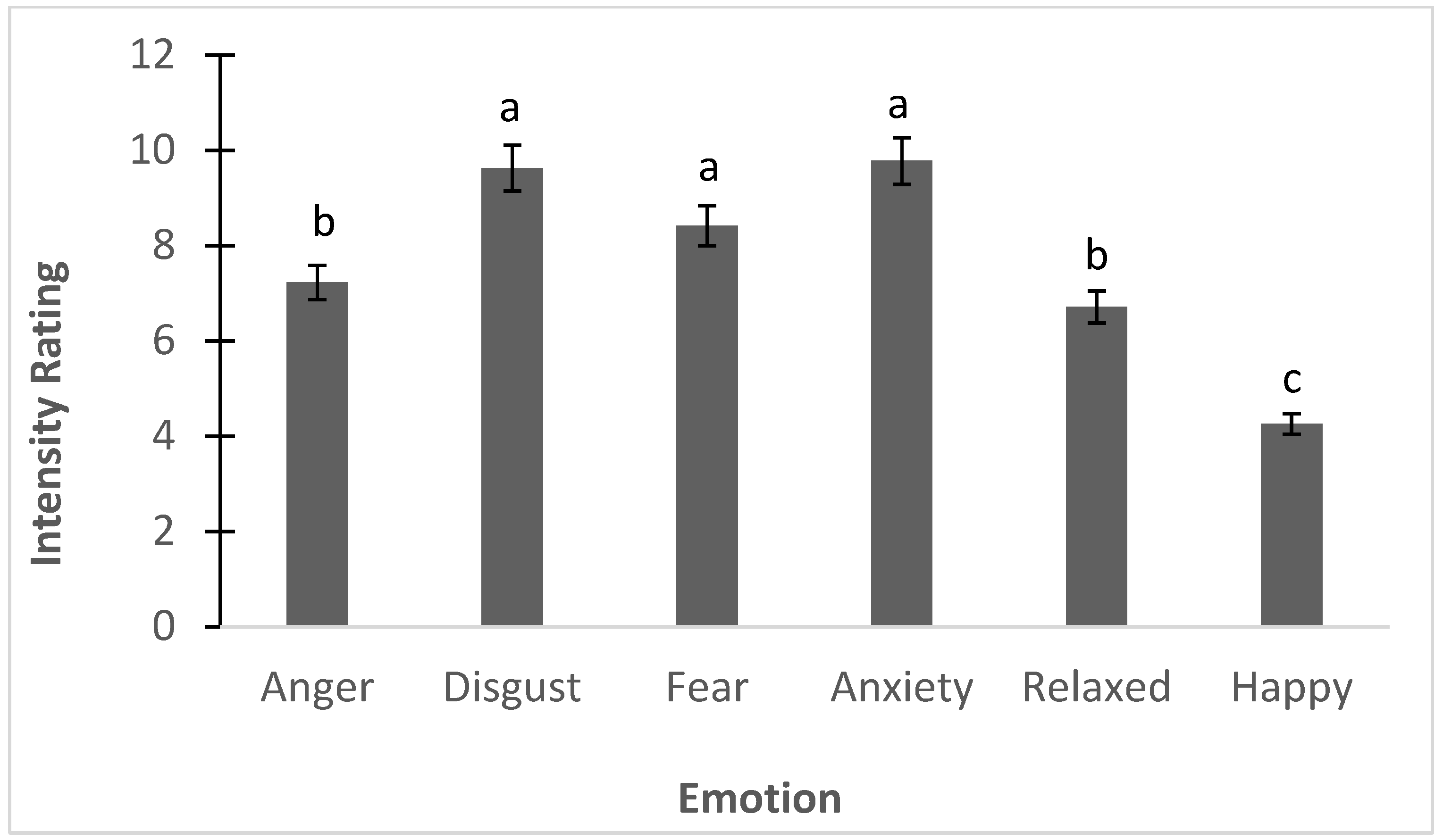
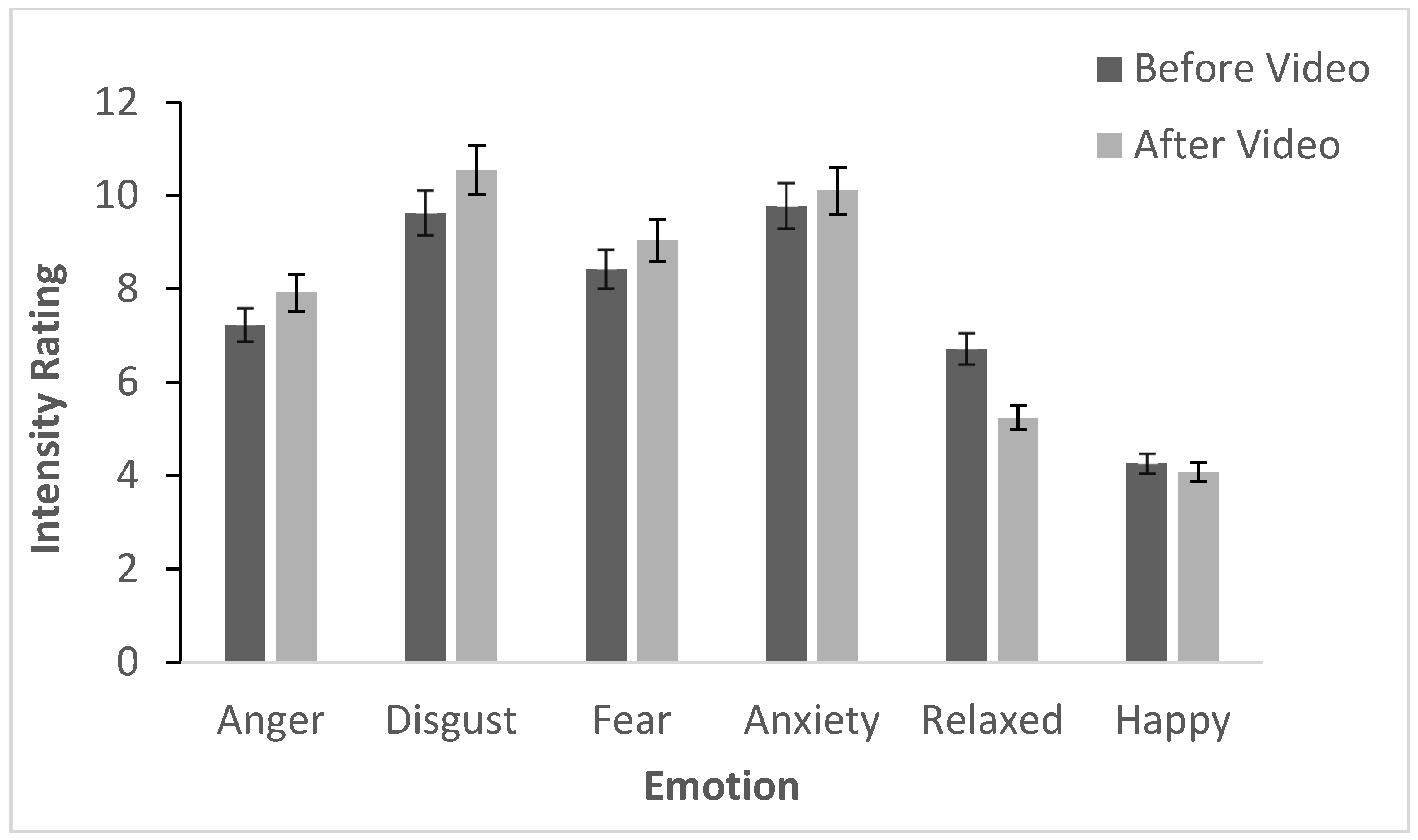
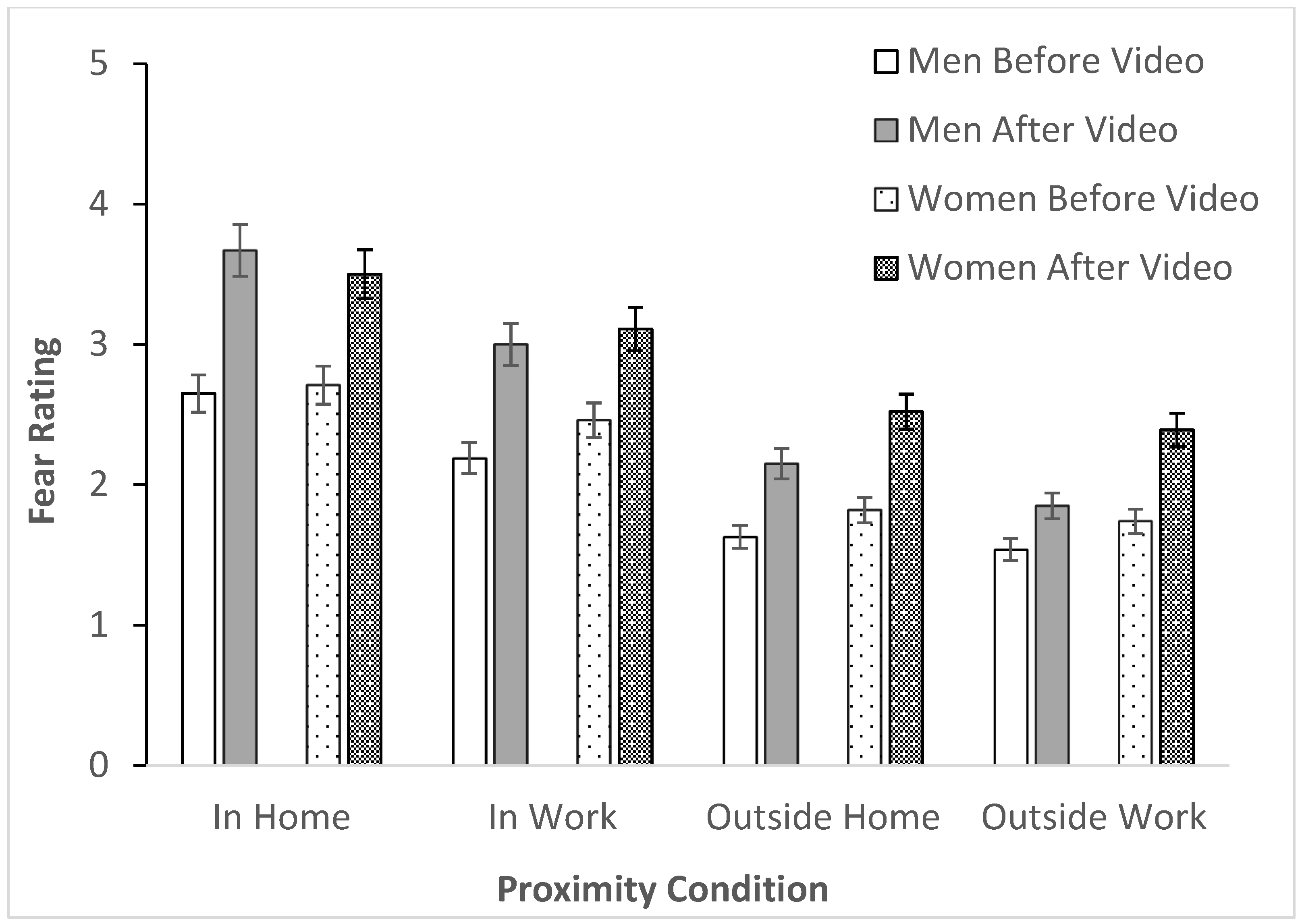
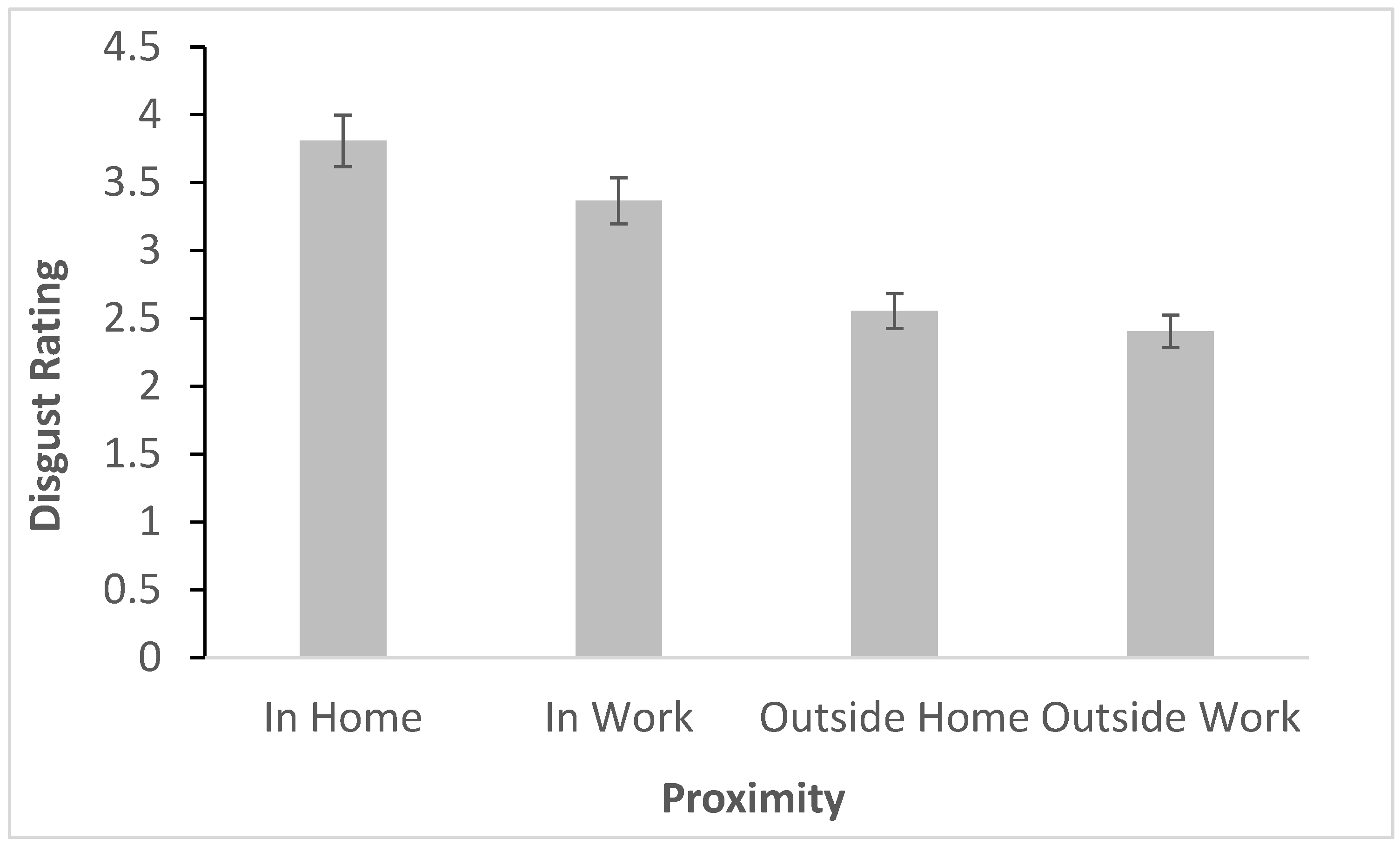
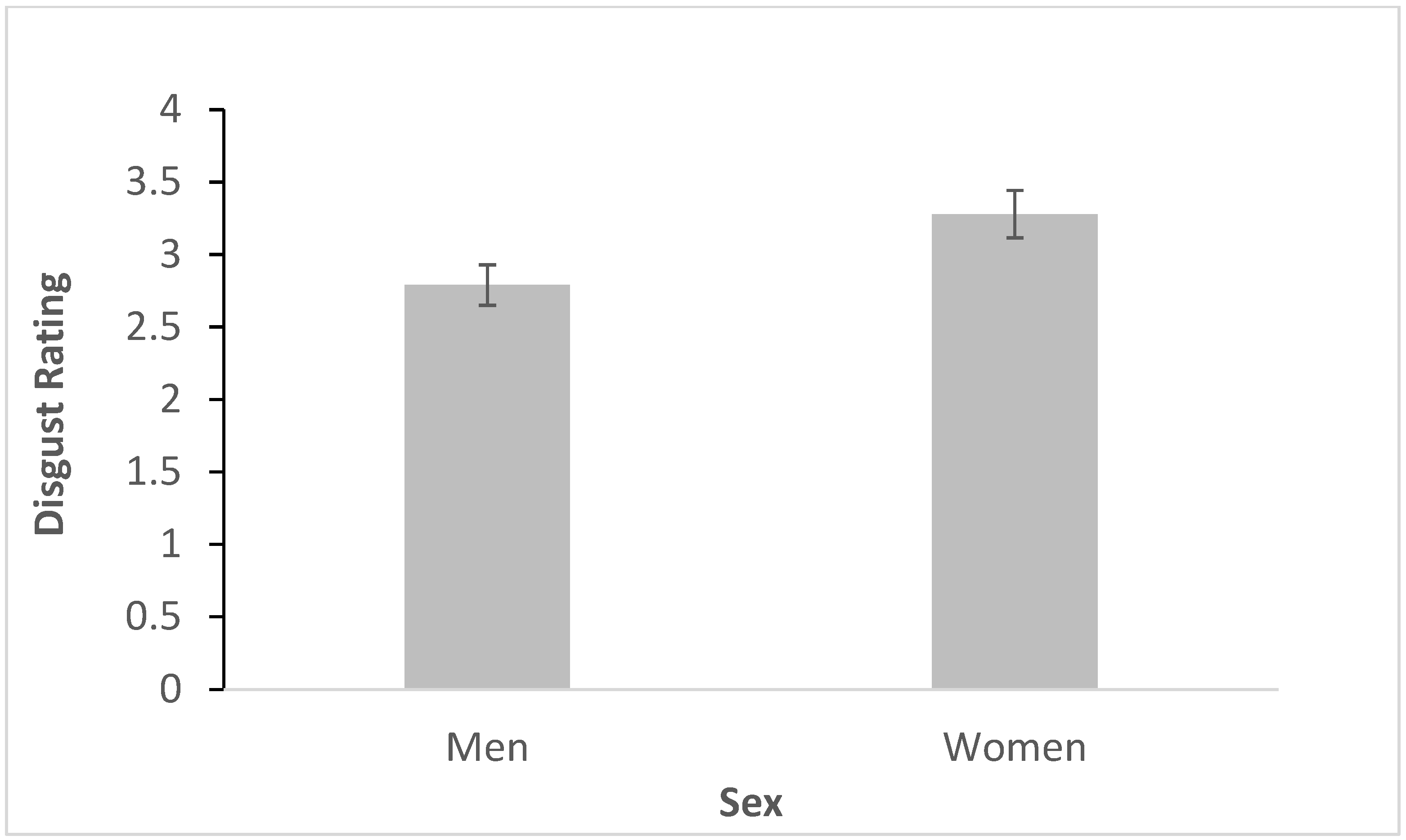
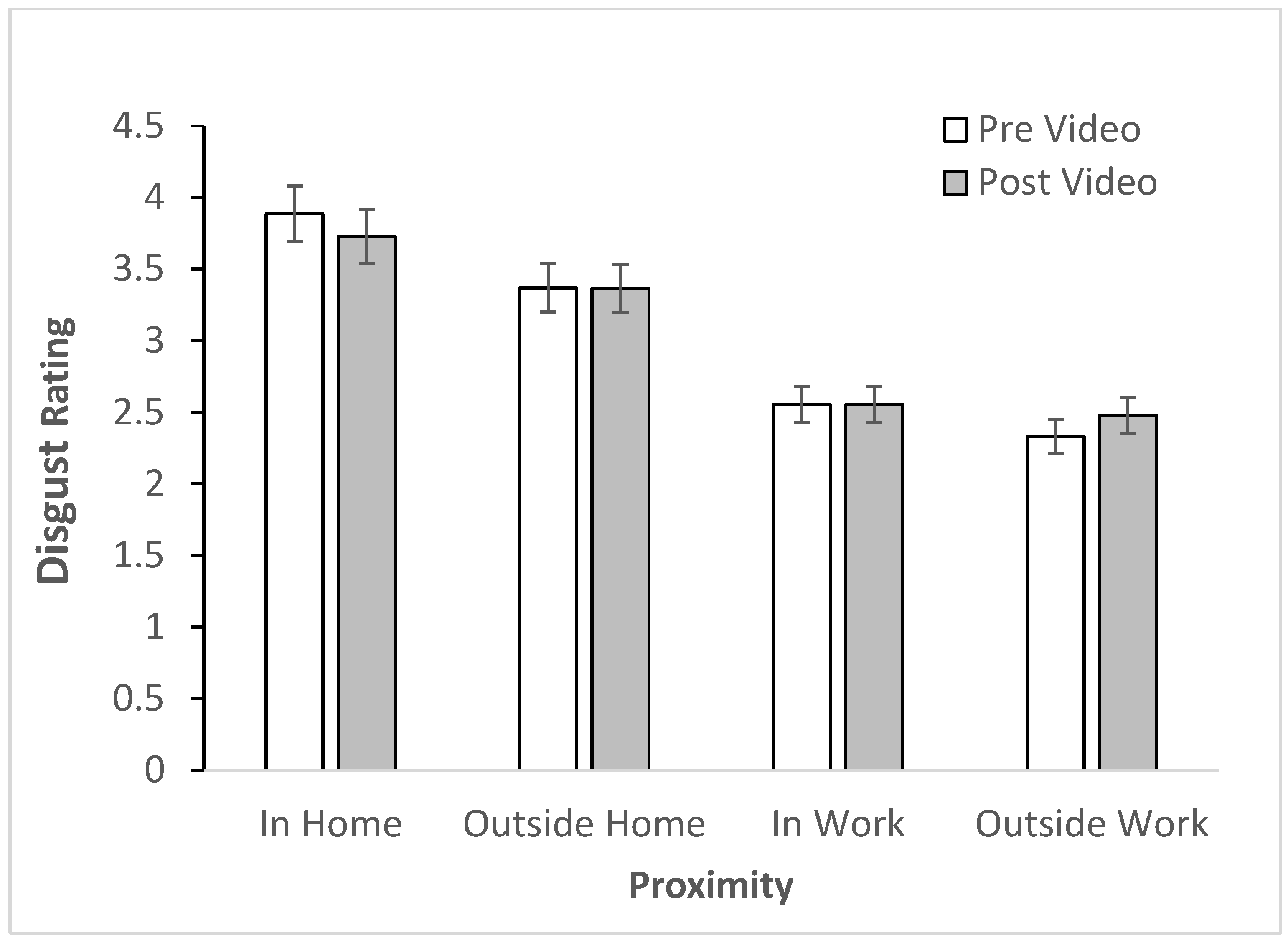
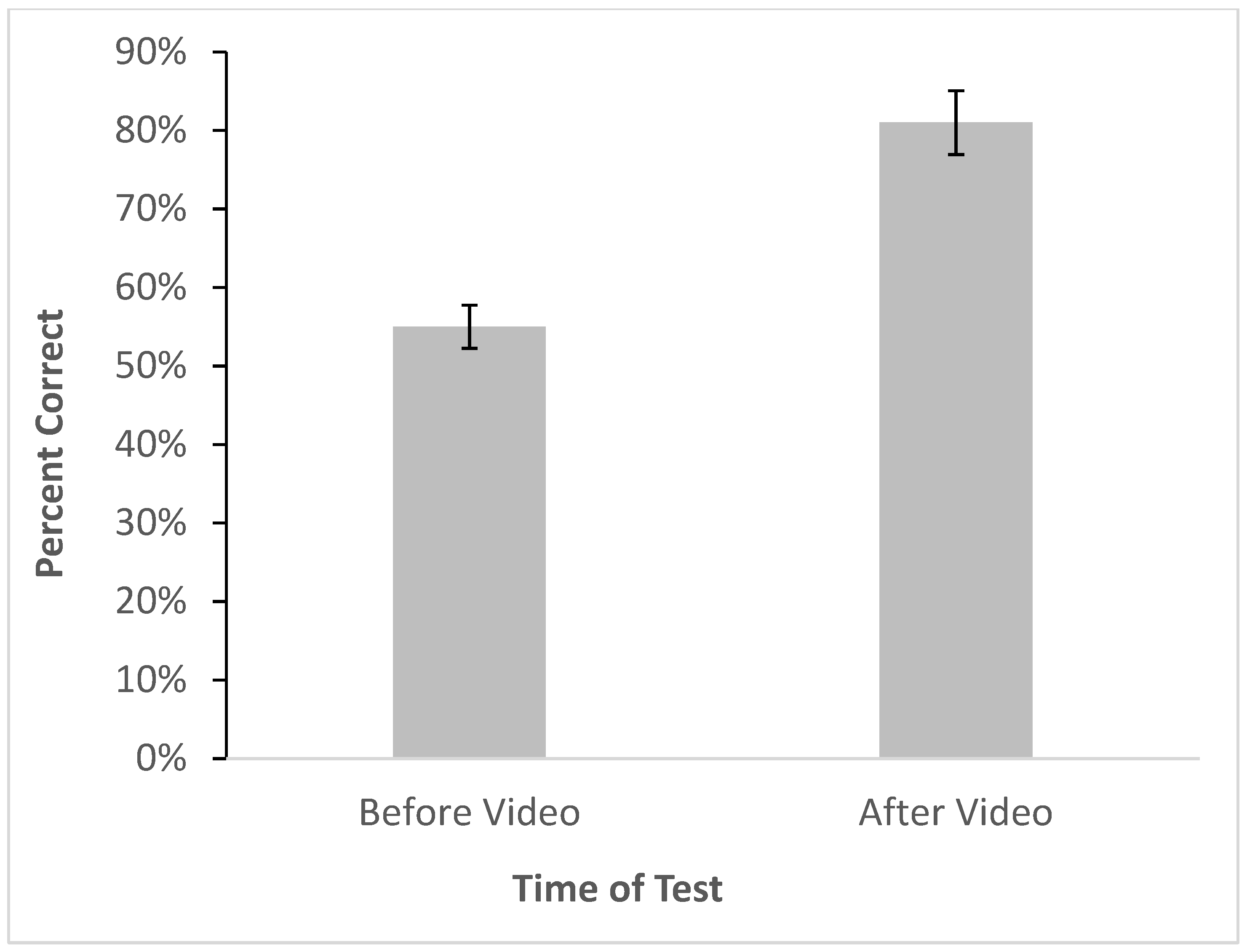
Disclaimer/Publisher’s Note: The statements, opinions and data contained in all publications are solely those of the individual author(s) and contributor(s) and not of MDPI and/or the editor(s). MDPI and/or the editor(s) disclaim responsibility for any injury to people or property resulting from any ideas, methods, instructions or products referred to in the content. |
© 2025 by the authors. Licensee MDPI, Basel, Switzerland. This article is an open access article distributed under the terms and conditions of the Creative Commons Attribution (CC BY) license (https://creativecommons.org/licenses/by/4.0/).
Share and Cite
McNeill, C.A.; Danek, R.H. Emotional Responses to Bed Bug Encounters: Effects of Sex, Proximity, and Educational Intervention on Fear and Disgust Perceptions. Insects 2025, 16, 759. https://doi.org/10.3390/insects16080759
McNeill CA, Danek RH. Emotional Responses to Bed Bug Encounters: Effects of Sex, Proximity, and Educational Intervention on Fear and Disgust Perceptions. Insects. 2025; 16(8):759. https://doi.org/10.3390/insects16080759
Chicago/Turabian StyleMcNeill, Corraine A., and Rose H. Danek. 2025. "Emotional Responses to Bed Bug Encounters: Effects of Sex, Proximity, and Educational Intervention on Fear and Disgust Perceptions" Insects 16, no. 8: 759. https://doi.org/10.3390/insects16080759
APA StyleMcNeill, C. A., & Danek, R. H. (2025). Emotional Responses to Bed Bug Encounters: Effects of Sex, Proximity, and Educational Intervention on Fear and Disgust Perceptions. Insects, 16(8), 759. https://doi.org/10.3390/insects16080759





